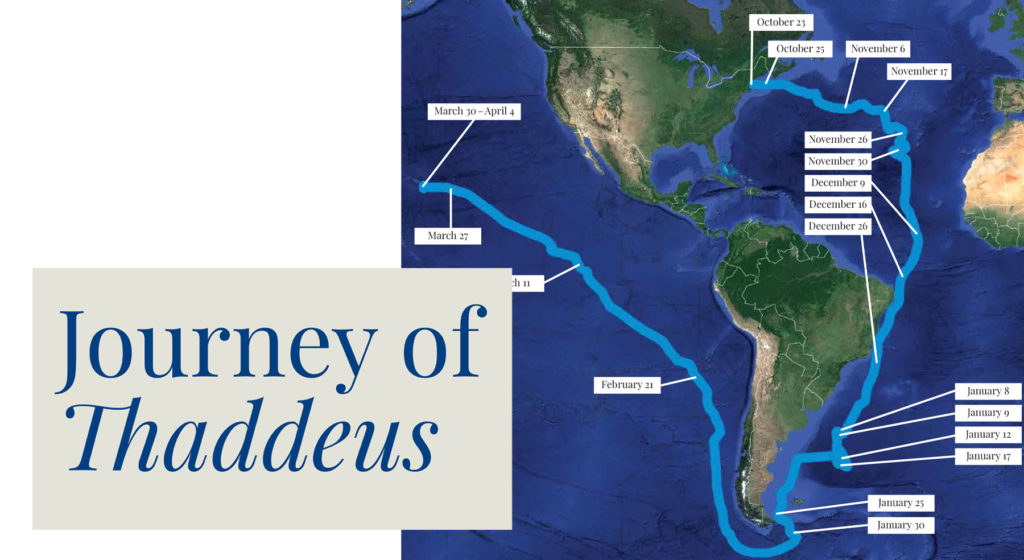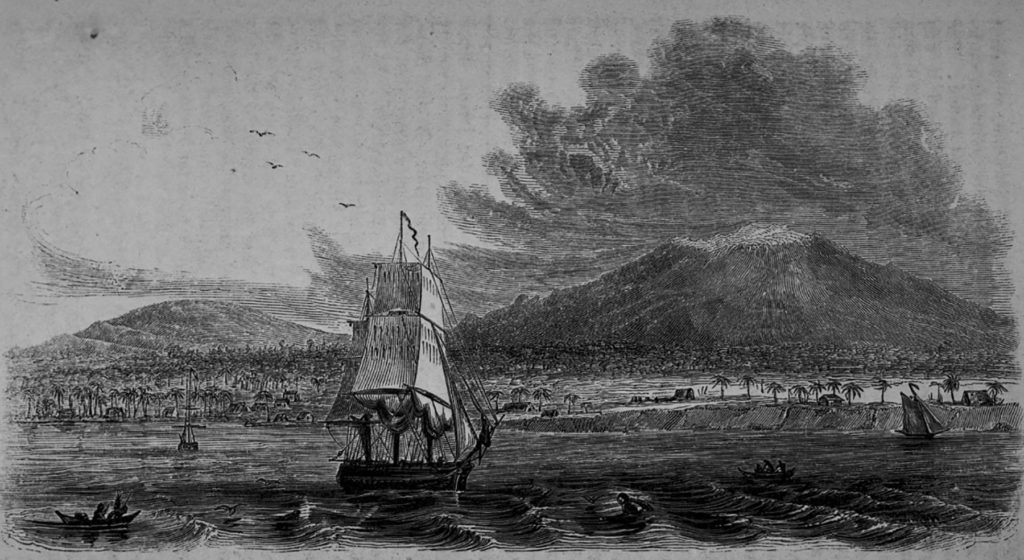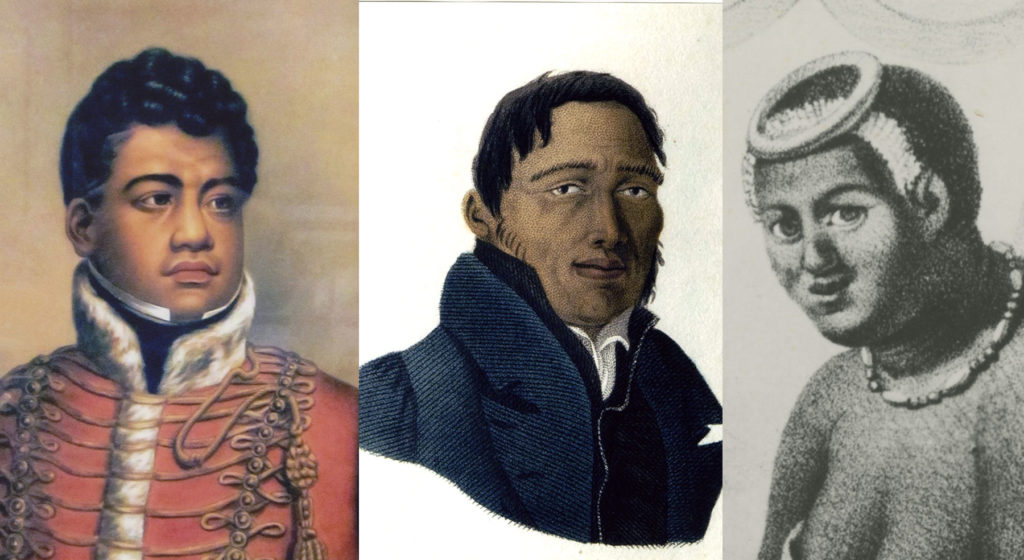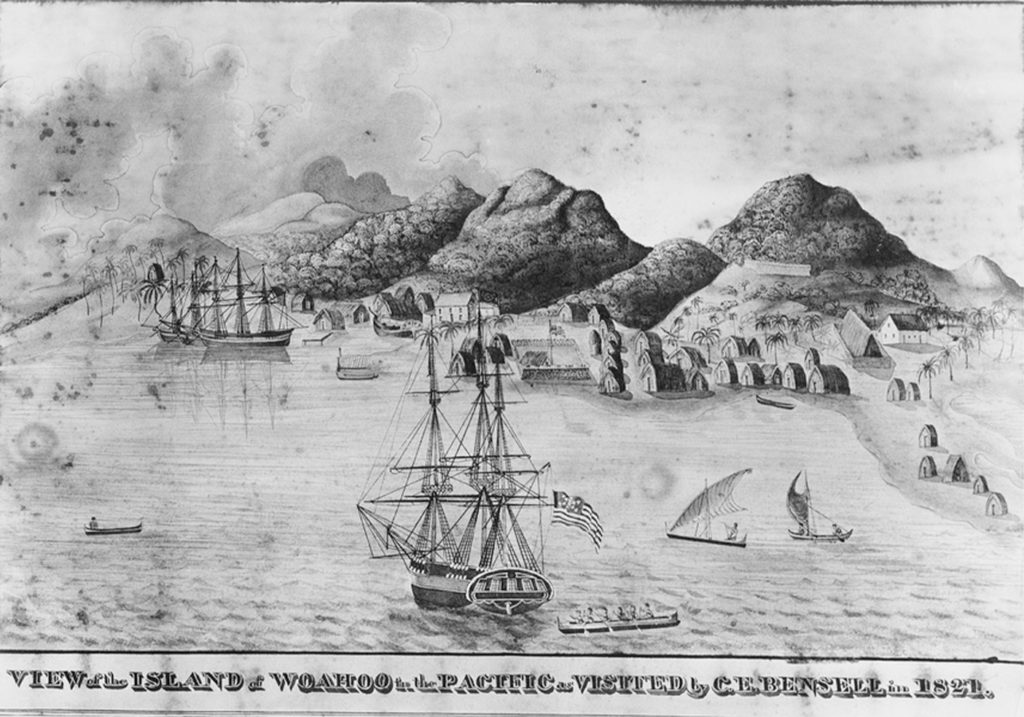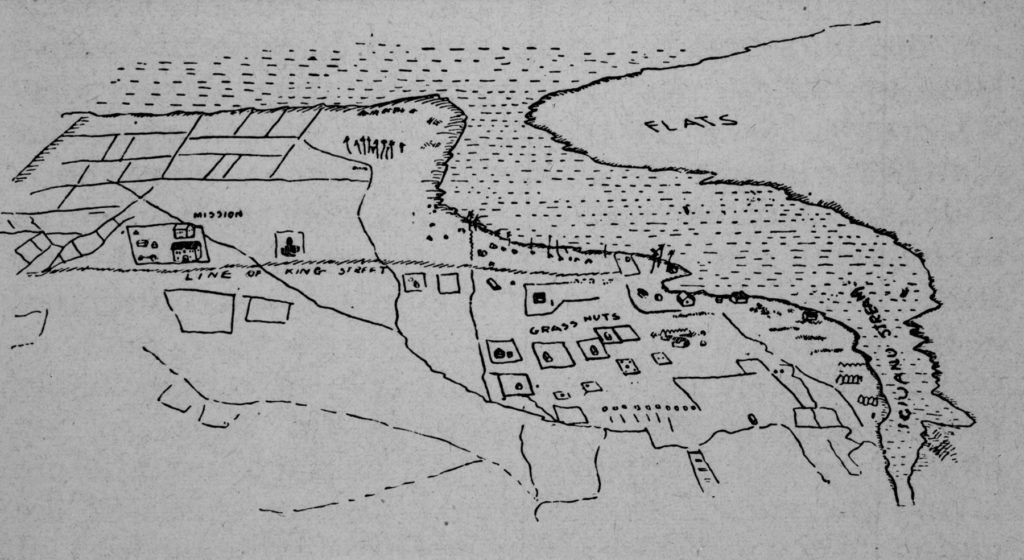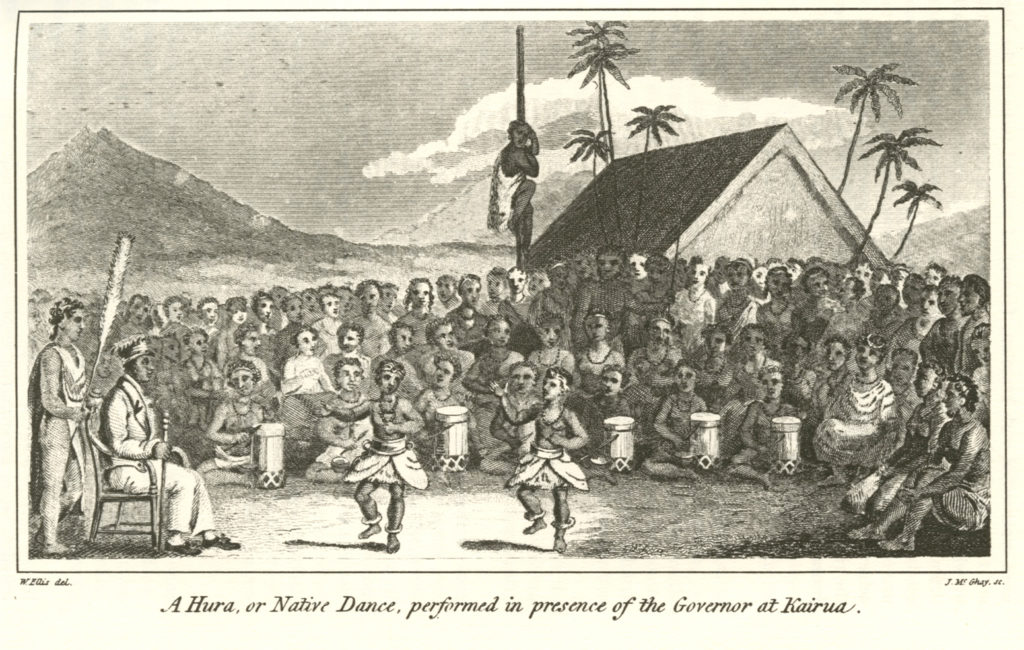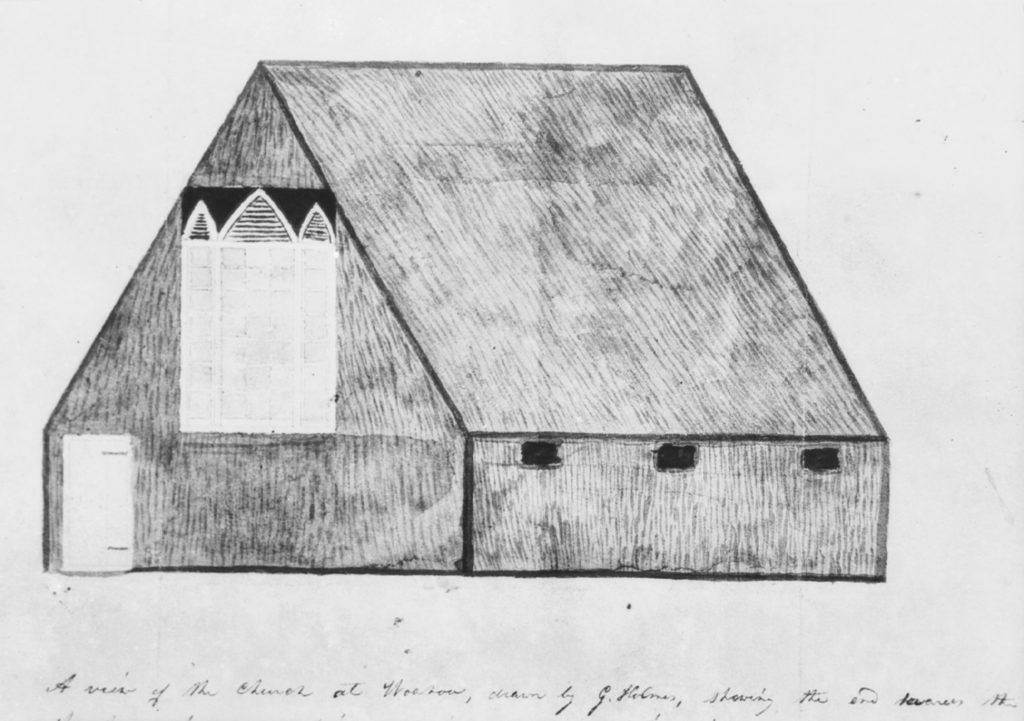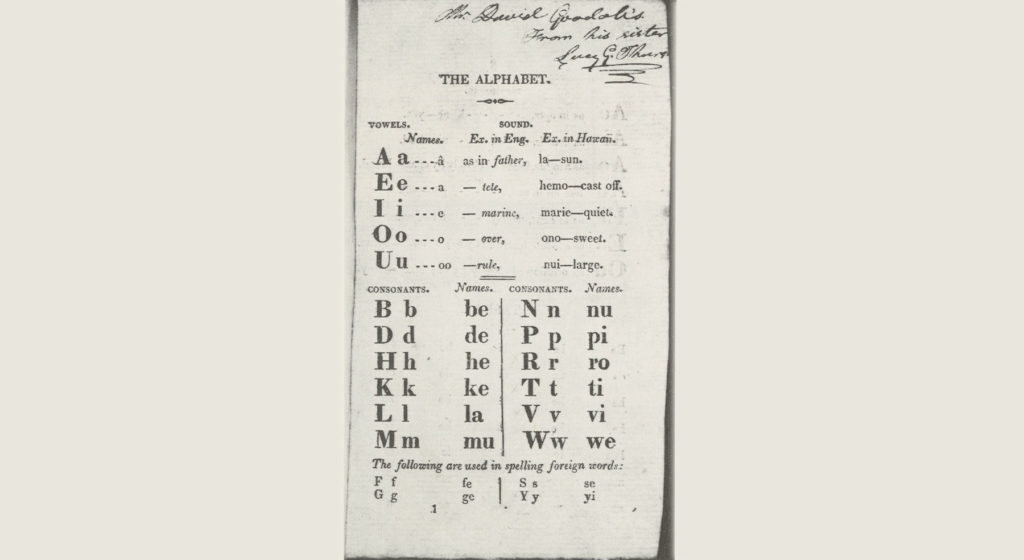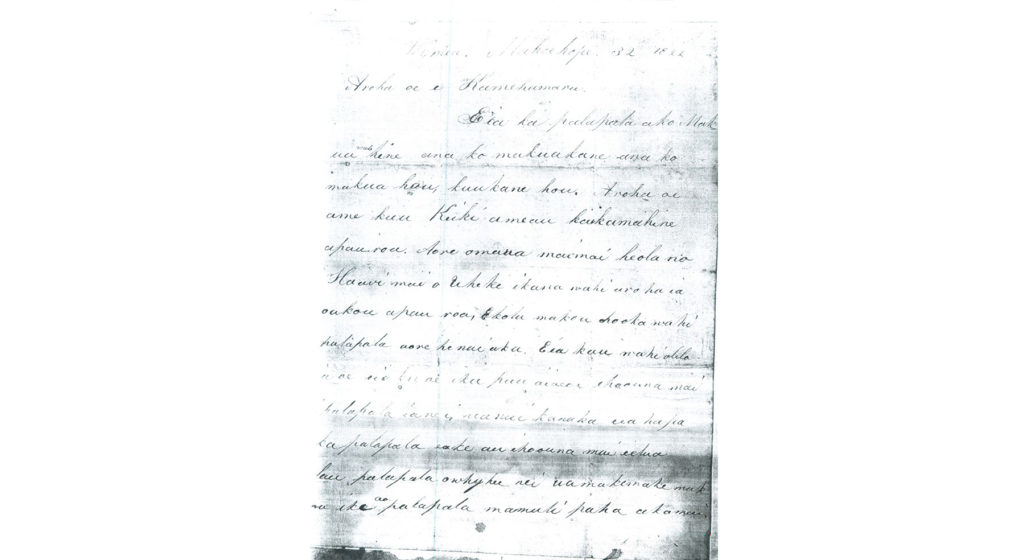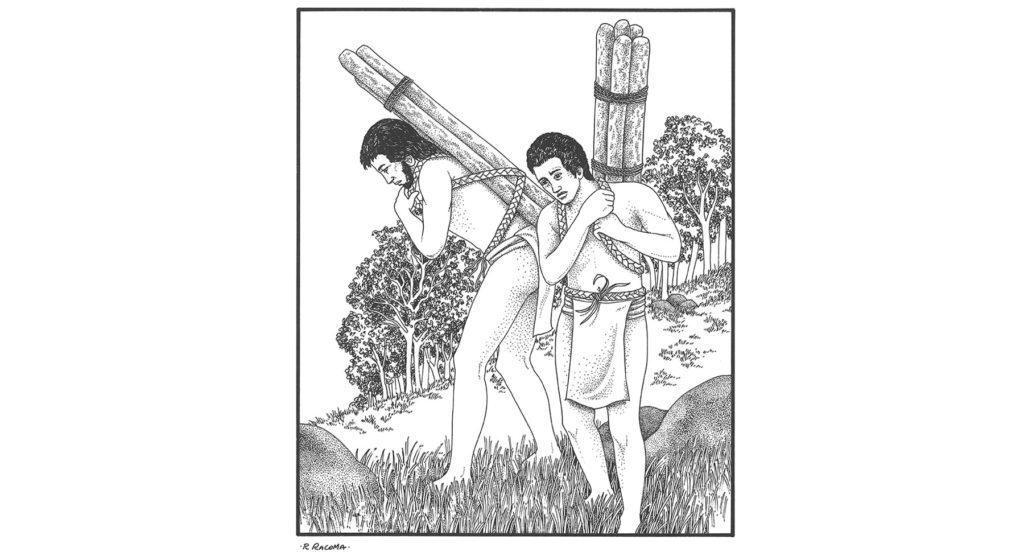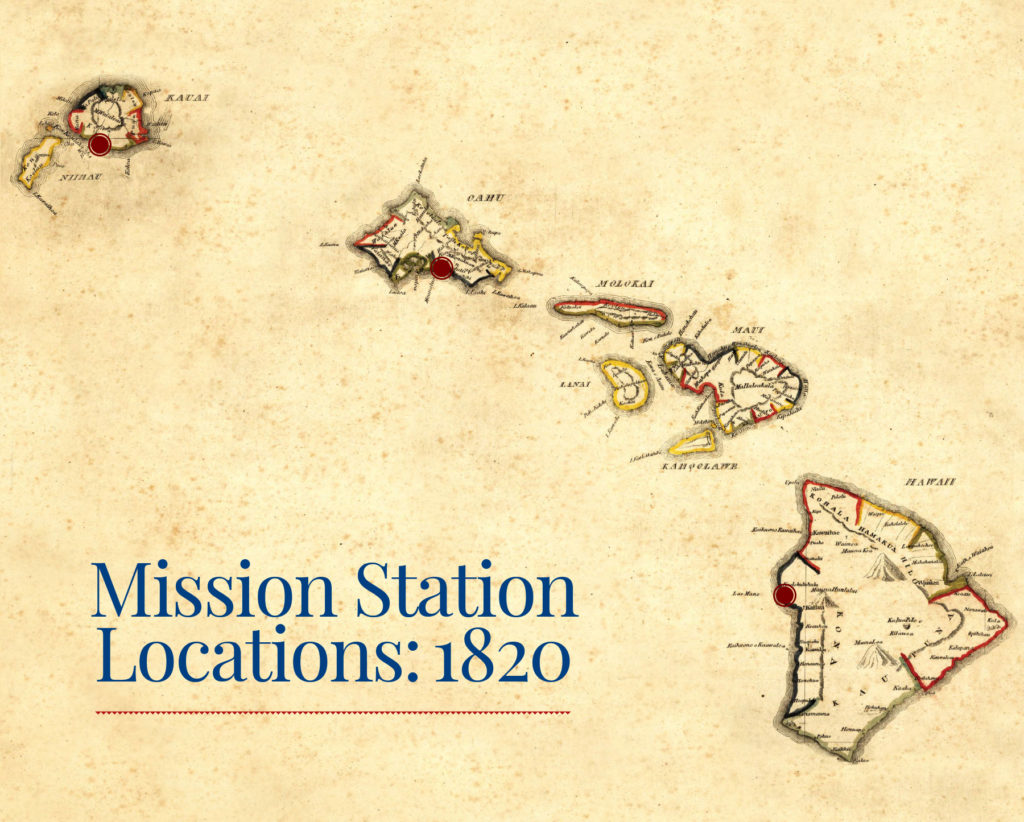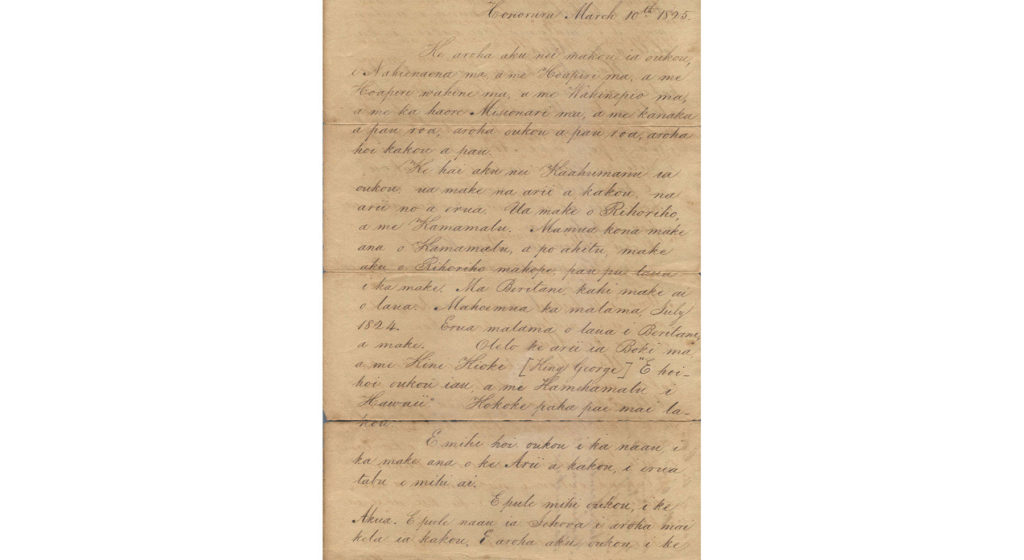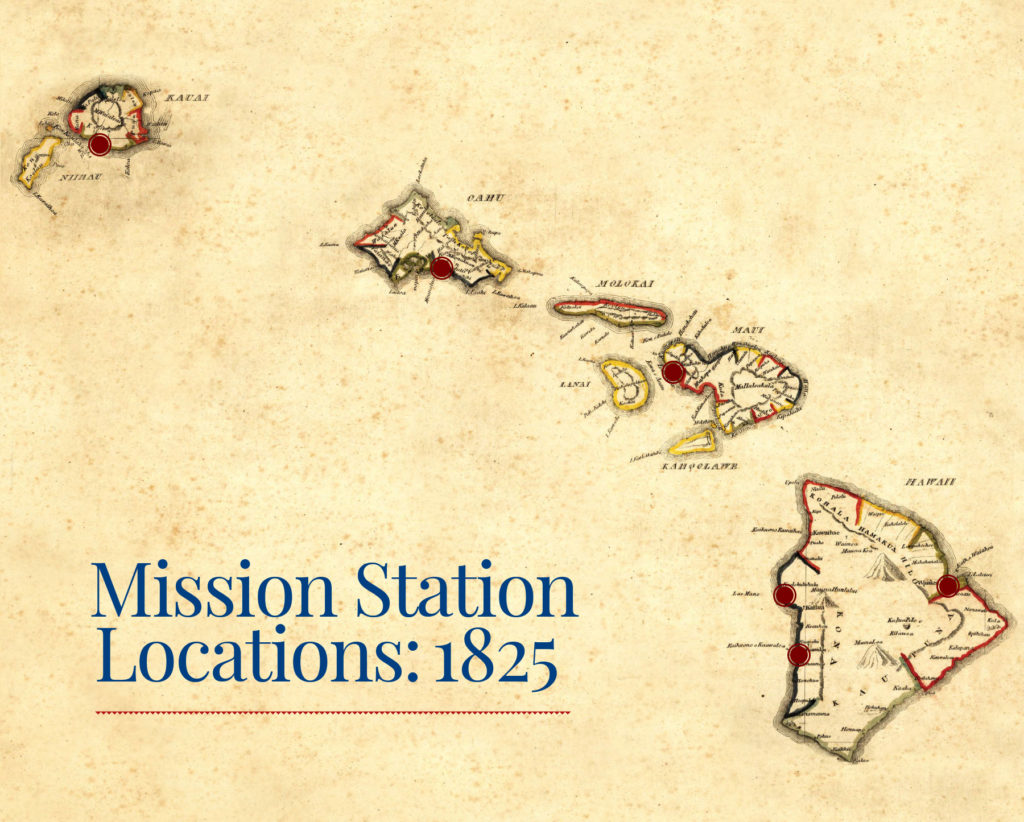The second exhibit of Eia Hawai‘i: 1819 – 1841 follows the journey of the Thaddeus and explores the first years in Hawai‘i after the arrival of the Pioneer Company of Protestant missionaries. After forty years of transformative adaptation to the growing traffic with Western explorers and traders, Liholiho (Kamehameha II), encouraged by his mother, Keōpūolani, and kuhina nui Ka‘ahumanu, had ended the ‘ai kapu, the religious and social system underlying Hawaiian institutions and structures. This opened the way for a new phase of “chiefly governance, authority, kapu and kānāwai (law).”1
Meanwhile, the brig Thaddeus was sailing toward the islands carrying evangelists eager to convert Hawaiians to their Protestant beliefs, intent on bringing light to the “heathen darkness.” These foreigners were different from others Hawaiians had known: they came intending to stay, they brought wives and children, and they intended to teach the population to read and write.
The missionaries also came with straitlaced New England morality, strict views on industriousness, and disdain for what they viewed as frivolity. They had a basic facility with the Hawaiian language but little understanding and, perhaps, consideration of the culture they were entering. The instructions delivered to the Pioneer Company by the ABCFM upon their departure explicitly forbade “all intermeddling with the political affairs and party concerns of the nation or people among whom you reside” and required “paying all proper respect to the powers that be.”2
The first encounter between missionaries and ali‘i, and the subsequent five years of interactions, set in place a collaboration in the Kingdom of Hawai‘i that helped to shape the trajectory of a nation.
The Exhibit Flow
The exhibit includes “The Journey,” a selection of journal entries describing the 164-day passage of the Thaddeus from Boston to Hawai‘i, and a timeline of events to note important occurrences, illustrate the interaction of Hawaiians and missionaries, and highlight other notable influences. They are geared to encourage such questions as “Why is this important?”, “Whose perspective is presented?” and “What else might I need to know?”
As you view this exhibit, consider that the primary sources from this early period are mainly written in English by Westerners. During this period, a written alphabet for ‘ōlelo Hawai‘i is developed and begins the flourishing Hawaiian writing of the later decades of the century. To seek a Hawaiian perspective on this time, sources written later are used. As noted Hawaiian historian, Kamakau, has noted, these later writings rely on an oral history which has been relayed through time. Can you imagine what it might have been like in 1820 – 1825?

Explore the timeline below that shows the chain of events from the journey of the Thaddeus to the end of the kapu.

Credits
Research, Writing and Edits
Carlyn Tani, Cynthia Wessendorf
Exhibit Advisors and Contributors
Malia Ane, Bonnie Christensen, Kimo Keaulana, Marion Lyman-Mersereau, Dita Ramler-Reppun, Ke‘alohi Reppun, Lynette Roster
Exhibit Content Review
David Ball, Christopher Cook, Ted Demura-Devore, Emma McGuire, Pam Sakamoto, Erik Swanson, Denise Wong, Peter Young
Project Support
Kathy Nelson and Jim Scott for providing the opportunity for this project.
Noe Archambault and Mike Latham for their ongoing support.
Community Support
American Bible Society
Brook and Deena Parker of HawaiianAtArt in honor of Kame’e Parker ’18
Christopher Cook
Hawaii State Archives
Hawaiian Mission Houses Museum and Archives and Peter Young, President, Board of Trustees
Honolulu Museum of Arts
Iolani Palace
Mānoa Heritage Center
Mokuaikaua Church
Torringford Congregational Church
University of Hawaii at Mānoa Library
Williams College Museum of Art
Yale University Art Gallery
In honor of my kupuna, Mele Holokahiki, Pololū Valley, and Gerrit Parmele Judd, Third Company.
Laurel Bowers Husain
1 Arista, Noelani, The Kingdom and the Republic, University of Pennsylvania Press, Philadelphia, 2019, p. 109.
2 “Instructions from the American Board of Commissioners for Foreign Missions,” Boston, 1819.

